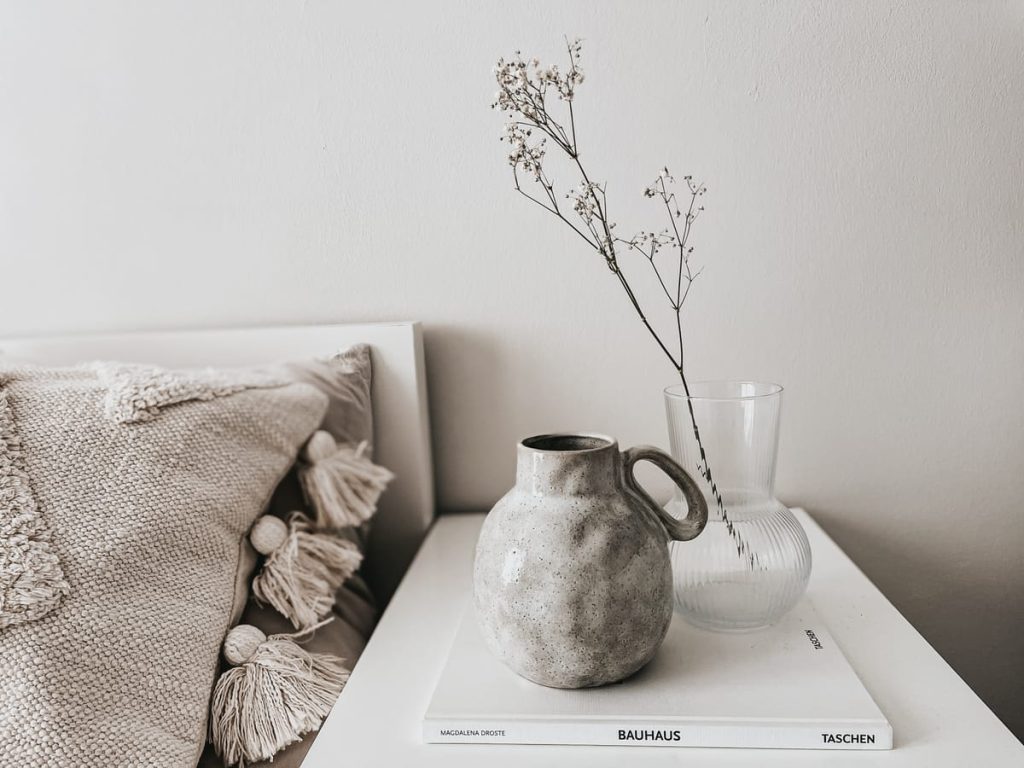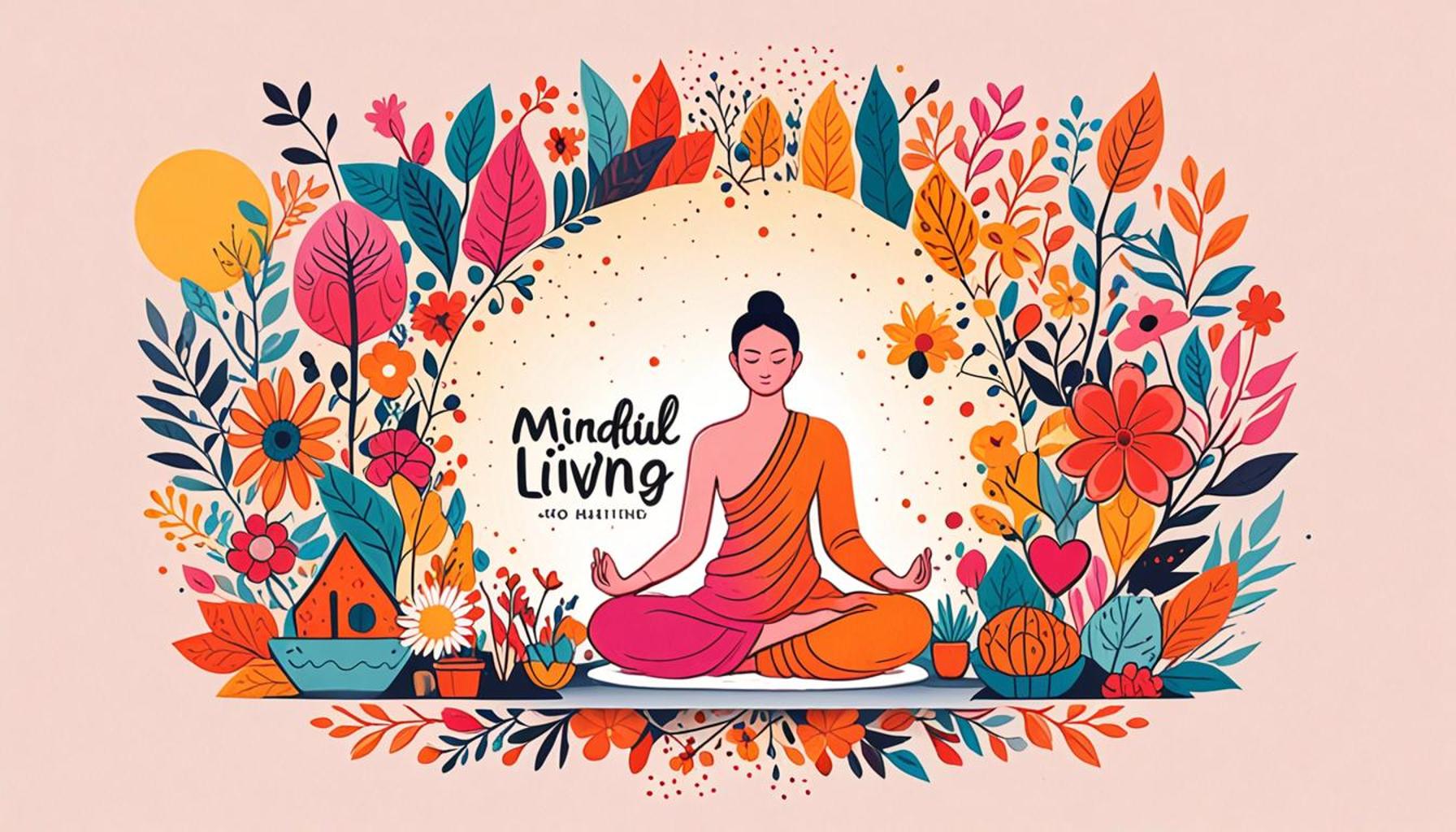The Impact of Mindful Living on Stress Reduction and Simplicity at Home

Understanding Mindful Living
In a world dominated by relentless schedules, distractions from technology, and the constant buzz of information, achieving a sense of calm and clarity may feel out of reach. The practice of mindful living has emerged as a beacon of hope for many seeking to reclaim this stillness. As the fast-paced lifestyle takes its toll, mindfulness offers a refreshing approach to navigating the hectic currents of modern life.
The reasons for the growing popularity of mindfulness are manifold, yet fundamentally rooted in the desire for control over one’s life and mental state. By practicing mindfulness, individuals can reap numerous benefits:
- Lower stress levels: Engaging in mindfulness allows individuals to concentrate on the present moment, thereby decreasing anxiety and fostering a profound sense of peace. Research has shown that individuals who practice mindfulness regularly report lower cortisol levels, which is the hormone related to stress.
- Enhanced simplicity at home: Mindful living promotes decluttering, both in physical spaces and within one’s mental landscape. This not only cultivates a serene environment but also encourages intentionality in the items we choose to keep around us. For example, Marie Kondo’s decluttering method aligns closely with mindful principles by advocating for items that “spark joy.”
- Improved emotional well-being: Techniques such as meditation, deep breathing, and body scans can lead to better emotional regulation, helping practitioners respond to life’s ups and downs with equanimity. A study from Harvard University revealed that mindfulness practice can increase gray matter in the brain regions associated with emotional regulation.
Research shows that these benefits extend into our domestic lives as well, transforming what can often feel like chaotic environments into havens of tranquility. Families are increasingly adopting mindful routines, whether it be designated tech-free times to foster connection or incorporating at-home meditation practices. This shift towards mindfulness not only enhances the emotional climate of the household but also encourages more mindful parenting, as caregivers model intentional living for their children.
As we explore how mindfulness transforms individual experiences and entire households, it becomes clear that this practice lays the groundwork for a more intentional lifestyle. By examining the interplay between mindfulness and one’s home environment, valuable insights emerge that inspire meaningful changes. Whether it’s creating a tranquil reading nook or cultivating a ritual around family dinners, each small decision rooted in mindfulness contributes to a more harmonious and fulfilling existence.
Thus, as more individuals engage with the principles of mindful living, the potential for collective growth becomes evident. It is a call to action for anyone who feels overwhelmed by the modern world to slow down, breathe, and embrace the present, ultimately leading to lives that are not only more manageable but also more enriching.

DISCOVER MORE: Click here to find out how intentional design shapes minimalist furniture choices
The Science Behind Mindfulness and Stress Reduction
The connection between mindful living and stress reduction is underscored by a wealth of scientific research. Practicing mindfulness enables individuals to achieve a state of awareness that diminishes their fight-or-flight response, which often kicks in when faced with stressors. This state of presence is not just about relaxation; it also actively rewires the brain to handle stress more effectively.
Studies have demonstrated that engaging in mindfulness practices can lead to significant decreases in stress-related symptoms. For instance, a meta-analysis published in the journal Psychological Bulletin found that mindfulness-based stress reduction programs significantly lowered anxiety and depression levels among participants. Beyond the psychological benefits, physiological changes occur as well. Regular mindfulness practice has been associated with reduced blood pressure and improved sleep quality, both of which are crucial for managing stress.
An essential component of this practice is the focus on breathing techniques. By concentrating on one’s breath, practitioners can create a refuge from the chaotic stimuli of everyday life. In this regard, individuals can experience a greater sense of control and clarity, allowing them to respond thoughtfully rather than react impulsively to stress. This skill develops over time and can transform how stress is perceived and handled in daily life.
Create a Mindful Home Environment
Mindful living extends into the home environment, encouraging a culture of simplicity and intention that cultivates tranquility. Implementing mindfulness at home can be accomplished through several practical steps that promote a less cluttered and more serene living space:
- Establish a Daily Mindfulness Routine: Allocating even just 10-15 minutes a day for mindfulness activities such as meditation or yoga can set a peaceful tone for the household.
- Declutter Mindfully: Rather than simply tidying up, decluttering can be seen as an opportunity to reflect on what brings joy and usefulness into your space. This means evaluating each item’s value in terms of both utility and emotional connection.
- Curate Your Surroundings: Choose to fill your home with items that foster peace and positivity. This includes selecting plants that promote well-being, using calming colors in decor, and incorporating sensory elements like candles or aromatherapy that create a soothing atmosphere.
- Designate Tech-Free Zones: Create areas in the home where technology is not allowed, encouraging family interactions and deeper connections without the distractions of screens.
By embracing these principles of mindful living, individuals not only reduce stress but also foster an environment that embodies simplicity and peace. Over time, these changes can ripple through all aspects of life, ultimately leading to a more harmonious and fulfilling existence at home.
| Category | Description |
|---|---|
| Mindful Practices | Incorporating meditation, breathing exercises, and gratitude journals. |
| Clutter Reduction | Streamlining personal space to promote tranquility and focus. |
In today’s fast-paced world, the concept of mindful living has emerged as a beacon for those seeking stress reduction and simplicity at home. By consciously practicing mindfulness, individuals can discover profound transformations within their daily routines. Incorporating mindful practices, such as meditation or simple breathing exercises, provides valuable respite from the usual turmoil and chaos. These practices encourage a deeper connection with oneself, fostering emotional clarity and resilience against life’s uncertainties.Moreover, addressing one’s environment through clutter reduction can significantly simplify daily life. A streamlined space not only enhances aesthetic appeal but also cultivates a tranquil atmosphere conducive to relaxation and focus. Reducing physical clutter frees the mind, allowing for a more present and engaged living experience. As one navigates through distractions, cultivating simplicity at home emerges as a powerful ally in the journey of mindful living, ultimately leading to less stress and greater overall well-being. Discovering more about these practices can encourage individuals to explore their potential for a more harmonious life experience.
DIVE DEEPER: Click here to discover how minimalism can enhance your small spaces
The Role of Mindful Practices in Daily Life
Integrating mindful practices into daily routines can significantly enhance the overall atmosphere of a home, showcasing how intentional actions lead to a lifestyle of simplicity and stress reduction. One of the most effective ways to achieve this is through the concept of mindful eating. By paying attention to what you consume—savoring each bite, observing flavors, and recognizing the body’s hunger and satiety signals—you create a more meaningful relationship with food. This practice not only promotes healthier eating habits, reducing stress related to weight and health, but it also helps ground individuals in the moment.
Another crucial aspect of mindful living is the cultivation of gratitude. Studies have shown that consciously acknowledging the positives in life, whether through journaling or verbal affirmations, can significantly decrease feelings of stress and anxiety. For example, families can implement a daily ritual where each member shares something they are grateful for during dinner. This simple act fosters connections among family members and creates a nurturing home environment that alleviates stress.
Mindfulness can also enhance communication, a vital component of peaceful home life. Practicing active listening—fully focusing on and empathizing with what others say—cultivates understanding and prevents misunderstandings that can lead to conflict. Furthermore, establishing a culture where family members feel safe expressing their feelings and concerns without fear of judgment is essential. A study published in the journal Family Process demonstrated that open communication within families reduces tension and creates a supportive atmosphere conducive to mindfulness.
Practical Strategies for Implementing Mindful Living
Adopting mindful living doesn’t have to be overwhelming; small, practical strategies can lead to significant changes. Here are some effective techniques to incorporate into your life:
- Practice Mindful Transitions: Turning mundane tasks, such as commuting or doing chores, into mindful moments can anchor your day. For instance, during your morning commute, focus on your breathing, appreciate your surroundings, or listen to calming music or a podcast that sparks joy.
- Engage in Mindful Movement: Activities such as tai chi, yoga, or even a leisurely walk can help you connect your body and mind. Engaging in these practices regularly can enhance flexibility not just physically, but mentally, ultimately leading to a more adaptive approach to stressors.
- Create Mindful Rituals: Incorporating rituals like tea brewing or candle lighting into your evening routine can provide a sense of closure to the day. These moments serve as a gentle reminder to pause and reflect, increasing a sense of calm within the home.
- Mindful Learning: Often, we rush through the process of learning new skills or acquiring knowledge. By embracing a mindful approach to learning—whether it’s reading, studying, or exploring hobbies—you enhance enjoyment and reduce the pressure to perform or achieve quickly.
Each of these strategies illustrates how mindful living goes beyond mere stress relief. It reshapes the entire home dynamic, fostering a culture of simplicity and present-moment awareness. As families practice mindfulness together, they not only reduce individual stress levels but also weave a fabric of shared values and connections that enrich the home environment.
DIVE DEEPER: Click here to discover the significance of simplicity in daily life</
Conclusion
In conclusion, the journey towards mindful living offers remarkable benefits in reducing stress and promoting simplicity within the home. By integrating practices such as mindful eating, cultivating gratitude, and enhancing communication, families can create an environment that fosters connection and tranquility. Each mindful action taken—whether it is savoring a meal or engaging in heartfelt discussions—encourages a sense of presence that permeates every corner of daily life.
Moreover, strategies that incorporate mindful transitions, rituals, and movement not only alleviate stress but also simplify one’s environment and interactions. The impact is profound: as families embrace these practices, they weave a tapestry of shared values and supportive dynamics that enrich their home life. A nurturing atmosphere emerges where each member feels valued, understood, and empowered to express themselves freely.
As more individuals discover the transformative power of mindful living, it becomes clear that this approach is not just a temporary fix but a sustainable lifestyle change. By fostering an intentional way of living, we can enhance our relationships and create a peaceful sanctuary amidst the chaos of modern life. Ultimately, embracing mindfulness equips us with the tools to navigate stress and savor the beauty of simplicity at home, leading to a more fulfilling life for ourselves and our loved ones.


